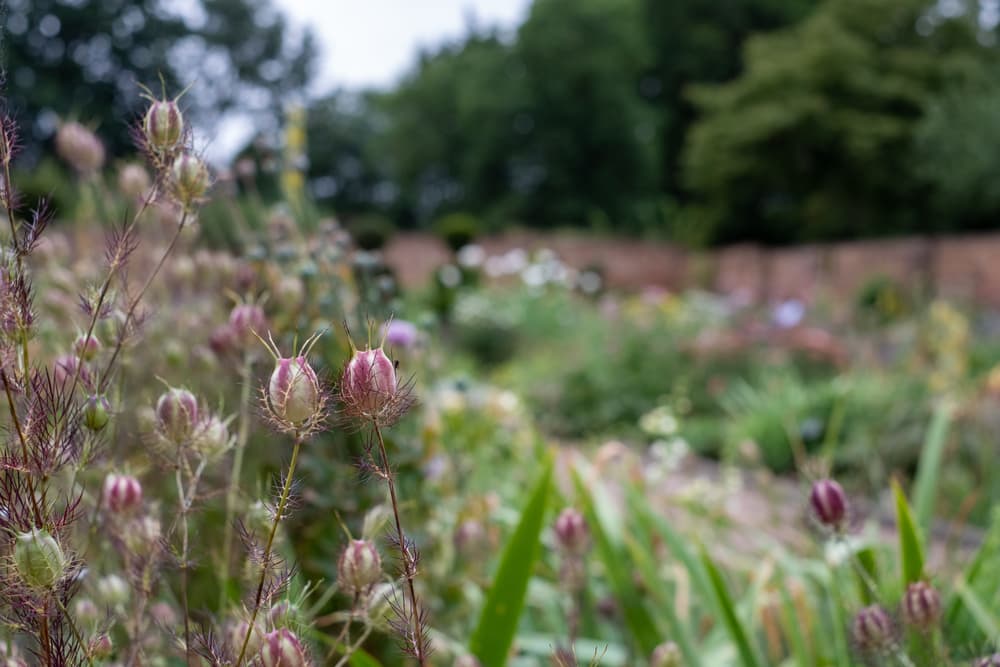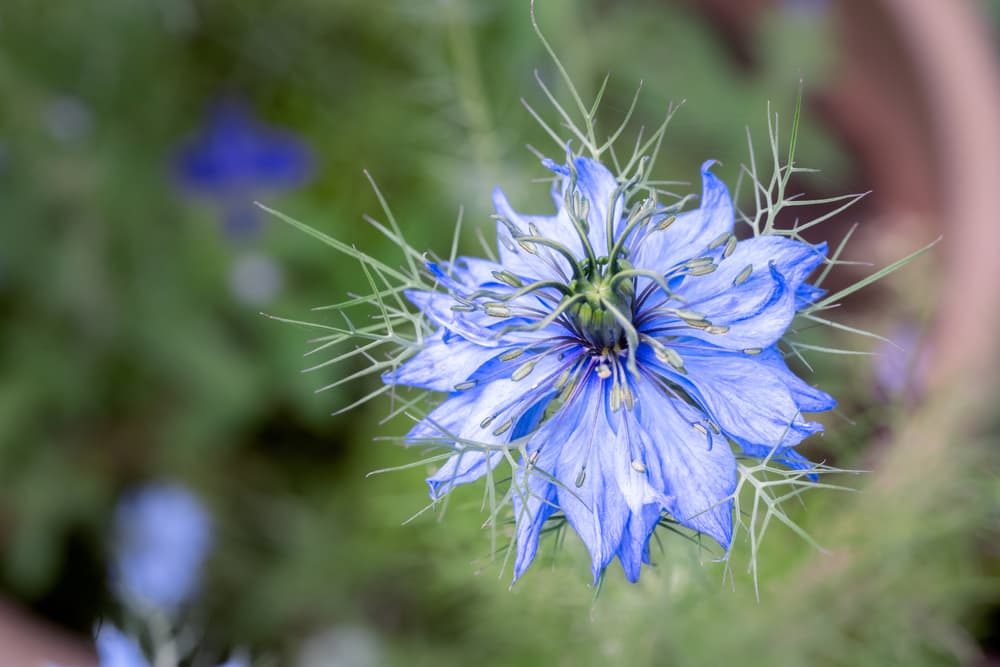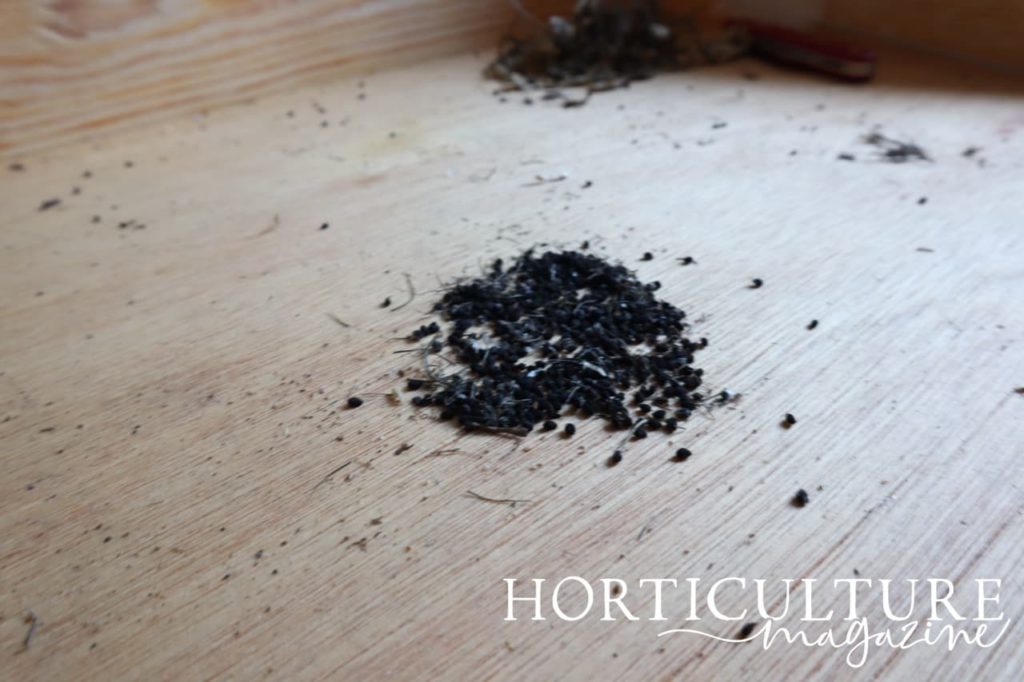ANNUALS > NIGELLA
Chris is a gardening writer and nature enthusiast. He graduated from Oxford Brookes University in 2022 with an MA in Psychology. Chris works with the Leeds Green Action Society, helping their food cooperative by growing various fruit and vegetables on their two allotments in Hyde Park, Leeds.
Reviewed By COLIN SKELLY

Colin is a Horticulturist and Horticultural Consultant with experience in a range of practical and managerial roles across heritage, commercial and public horticulture. He holds the Royal Horticultural Society’s Master of Horticulture award and has a particular interest in horticultural ecology and naturalistic planting for habitat and climate resilience.
Contributions From EMILY CUPIT

Emily is a Gardening Writer, Photographer and Videographer from Derbyshire, UK. She is the Founder of Emily's Green Diary - a community of more than 75,000 people who share in her gardening journey.

Molly Hollman has received numerous accolades for her garden & plant photography, including winning the Portfolio category of the Garden Photographer of the Year in 2022 and becoming a finalist in the International Close-Up Photographer of the Year in the same year. Molly is also the author of Creative Flower and Plant Photography and writes for the magazine Amateur Photographer on a regular basis.
IN THIS GUIDE
NIGELLA GUIDES
This article is for all you hopeless romantics out there.
Nigella, also known as love-in-a-mist is a charming, old-fashioned annual.
It produces stunning, solitary flowers which are encased in delicate, feathery bracts which give the impression of the flower being surrounded by mist.
Love-in-a-mist blooms in colours of blue, pink, lavender and white and can bring a real sense of magic to your garden.
“I have many flowers and plants that I love to photograph, but one of my favourites has to be Nigella damascena because they are so structural,” shares Molly Hollman, an award-winning Photographer.
Growing to a height of 15-24 inches and, if there is space, up to a foot in width, this pretty plant is perfect for pots and containers as well as mixed borders and gaps.
With its unusual and unique appearance, feathery foliage and fascinating flowers, love-in-a-mist can really provide texture, structure and interest to your garden, making it a firm favourite among gardeners.
Overview
| Botanical Name | Nigella |
| Common Name(s) | Love-In-A-Mist |
| Plant Type | Annual Flower |
| Native Area | South Europe, North Africa, South-West Asia |
| Hardiness Rating | H3 |
| Foliage | Finely dissected leaves |
| Flowers | Solitary blue or white flowers |
| When To Sow | April, May, September, October |
| Flowering Months | June, July, August |
Sunlight
Preferred
Full Sun
Exposure
Sheltered
Size
Height
0.1 – 0.5M
Spread
0.1 – 0.5M
Bloom Time
June – August
Soil
Preferred
Chalk, Loam, Sand
Moisture
Well Drained
pH
Neutral / Alkaline
Nigella ‘love-in-a-mist’ is an upright growing, annual garden flowering plant that has a long season of interest.
It is very easy to grow from seed and in the cooler months produces stunning flowers to cut.
If you are able to resist cutting the flowers then come summer, you will be rewarded with kooky seed pods.
Belonging to the buttercup family, love-in-a-mist is native to Southern Europe, Northern Africa and the South-West of Asia.1S. (n.d.-f). Love-in-a-Mist, Nigella damascena. Wisconsin Horticulture. Retrieved March 21, 2023, from https://hort.extension.wisc.edu/articles/love-in-a-mist-nigella-damascena/
The flowers usually bloom from early summer but can bloom in spring and autumn too, and the plant self-seeds and grows in the same spot year after year.

Love-in-a-mist is said to represent harmony and love with the flower symbolising the bonds that bind people together.
The seeds of nigella are frequently used in cooking; they are usually dried and can be found in baked goods, pickles, and can also be used as a substitute for pepper.
This effortlessly beautiful plant thrives best in full sun to partial shade and prefers moist, well-drained soil.
Why Grow Nigella?
With their quirky and unique beauty, it is hard to find a reason not to love these gorgeous plants.

But if you are still not sold, here are a few more reasons to fall in love with them:
- This plant is great for sowing over spring bulbs; once the bulbs have finished blooming, nigella will take the stage and keep your garden looking glorious and filling up unsightly gaps. As spring bulbs go over, autumn sown Nigella will start to take over and by early summer will be in flower. They may even be in flower to accompany late Tulips, so bear this in mind when considering colour combinations.
- Nigella is a fabulous cut flower making for charming displays. The funky seed pods are also a great addition to both fresh and dried arrangements.
- It makes a charming choice for informal cottage gardens, but given how well it does in pots and containers, it can work beautifully in any garden no matter the size or style.
- Nigella is a prolific reseeder so, once planted, they will reward you with flowers year after year.
Common Varieties
Now that you’ve decided that your garden is simply crying out for love-in-a-mist, then it’s time to choose the right one for your garden.
There are many varieties to choose from, so we’ve picked out some of our favourites to help you get started.
‘Miss Jekyll Dark Blue’

This popular, upright, bushy variety boasts stunning, dark blue blooms which are then followed with decorative, balloon-shaped seed pods which are a quirky addition for dried flower displays.
Growing to a height of 18 inches and 12 inches in width, this cultivar will is unfussy and will grow in any well-drained soil.
Plant ‘Miss Jekyll Dark Blue’ where it can receive full sun, and it will reward you with a fabulous display.
This species of love-in-a-mist is ideal for flower borders and beds, city and country courtyards, cottage gardens and pots and containers for patios and decking.
‘Miss Jekyll Alba’

This splendid variety is very similar to the ‘Miss Jekyll Dark Blue’ but instead sports pretty ornate white flowers and bright green seed pods.
These will thrive in all the same spots as the previous species; however, they are particularly useful for brightening up sunny borders.
‘Miss Jekyll Alba’ usually grows up to 20 inches in height and the same in width and is easy to care for, requires little pruning and is generally problem-free when it comes to pests and diseases.
This variety blooms between July and September and will thrive in moist, well-drained soil, full sun and in a sheltered spot.
‘Blue Midget’

This dwarf nigella is a little shorter than other varieties and only grows to around 10 inches in height, making it a brilliant option for edging.
It has beautiful sky-blue flowers and the same ferny, misty foliage as other members of the love-in-a-mist family.
‘Blue Midget’ nigellas prefer moist, well-drained soil and full sun although they will tolerate partial shade.
You can either sow your seeds between March and May, or in autumn, and they will bloom the following year.
You can cut flowers regularly to encourage growth and prolong the flowering window.
You will also need to deadhead them if you do not wish them to reseed.
‘Persian Jewels’

This type of love-in-a-mist produces a gorgeous jumble of bloom colours in shades of blue, purple, pink and white.
‘Persian Jewels’ grow from 12-18 inches in height and are perfect for bedding.
They also make exquisite cut flowers and look simply stunning in a vase.
The seeds of this variety have a strong aroma and spicy taste and can be used to great effect in cooking and baking, adding a burst of flavour to bread, cakes and curries.
You should plant nigella in moist, well-drained soil and full sun and will flower from June to August.
How To Grow
Now that you have your heart set on planting nigellas and have chosen the perfect ones for your garden, it’s time to get started.
Thankfully these pretty plants are straightforward to grow and care for and are very low maintenance, and we’ve put together everything you need to know to get it right the first time.
Planting
Love-in-a-mist does not do well being transplanted, so growing from seed is the best way to go.
You can sow seeds from early spring and all through summer for same year flowering, or in autumn so they will flower the following year.
Sowing seeds is simple, just scatter them in your chosen spot and gently rake them in.

Don’t worry about covering them with soil but do ensure they are pressed in slightly and kept nice and moist.
For the best result, choose a sunny, sheltered location.
Love-in-a-mist is a short-lived plant, but you can keep the flowers going by continuing to sow every four weeks or so.

The bonus of them being short-lived means they tend to remain trouble-free as pests and diseases don’t have time to take hold.
Container Growing
Love-in-a-mist makes a stunning addition to pots and containers.
You can give them the best shot by sowing them inside and keeping them indoors for around six weeks.
You can then place the pot or container outside in a sunny, sheltered spot.

As previously mentioned, these plants do not tolerate being transplanted well, so make sure you plant them in a pot or container with adequate space so you can avoid repotting.
Soil Requirements
Love-in-a-mist is remarkably unfussy but will thrive best in fertile, nutrient-rich soil, and while the soil needs to be moist, they don’t enjoy sitting in wet earth.
This plucky plant will also tolerate drier conditions and other types of soil including gravelly types, clay and clay-loam.
Plant Care
Watering
During dry periods we recommend watering your nigella at least a couple of times a week, always check the moisture of the soil and then water accordingly.
Fertilising
If you want you can add a general-purpose fertiliser when you sow your seeds and then fertilise again around a month later.
Pruning
If you want to keep your plant flowering longer, you can deadhead or cut the flowers.
That said, this will mean you will sacrifice the quirky seed pods which will also mean the plants won’t self-seed – meaning you will have to sow a fresh batch the following year.

Common Problems
This fabulous flowering annual rarely suffers from pests and diseases.
That said, whiteflies, thrips and other common pests may find their way in.
If this occurs, simply spray the plant down with a hose and this will wash the pests away without damaging any flowers.

As you can see, this gorgeous plant is one of a kind.
It’s easy to grow and easy to care for, making it easy to see why this plant has been popular for so many years.
It’ll add so much colour, texture and interest to your garden.
Be sure to research your chosen variety to give them the best start and they will reward you with their exquisite aesthetic year after year.
References
- 1S. (n.d.-f). Love-in-a-Mist, Nigella damascena. Wisconsin Horticulture. Retrieved March 21, 2023, from https://hort.extension.wisc.edu/articles/love-in-a-mist-nigella-damascena/

